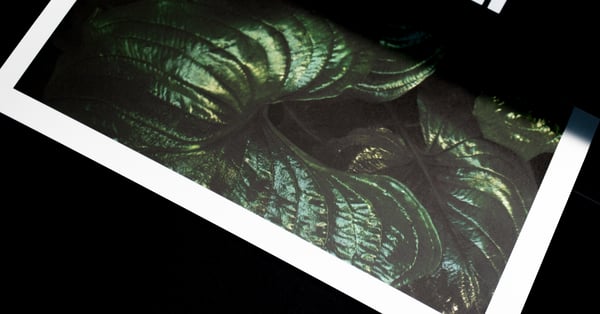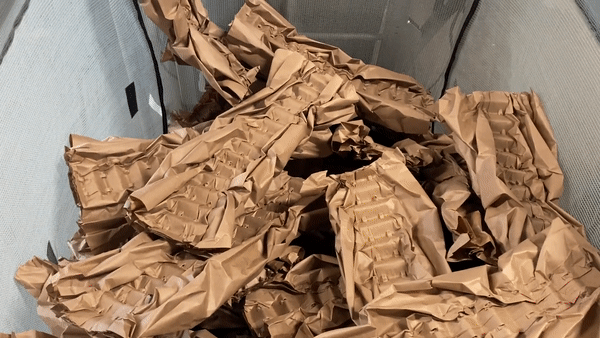Right now and in the future, working with a company whose focus is sustainability and the environment is important. We all have a duty to protect and promote our natural world, so your best choice is to work with a commercial printer who’s determined to lower their (and your) environmental footprint when it comes to printed marketing materials.

So who do you choose to work with when you need professional printing services? Here are the top six things to look out for.
- ISO Certification
- On-Site Recycling
- Low Energy Printing
- Carbon Balancing
- FSC® Certification
- Sustainable Packaging
1. ISO Certification
Print suppliers can work within the ISO 14000 Environmental Management framework and become ISO-certified. The legislation requires a print company to create an environmental management system that can be used to improve environmental performance.
Within this framework the company will constantly monitor its impact on the planet and continually look at ways to reduce it. This can cover many things, such as:
- Minimising and segregating waste.
- Recycling.
- Reducing energy consumption.
ISO certification is audited yearly and only companies that pass can proudly frame the certification on their wall.
2.On-Site Recycling
With global consumption increasing, it makes environmental sense to recycle your waste.
Any print supplier worth its salt will actively look into waste management, deciding how to reduce their waste and implement company-wide recycling programs. A print provider who puts effort into its recycling is obviously one clued up on how to be green.
3. Low-Energy Printing
There are plenty of methods that make printing more environmentally friendly. First, when looking at printing methods, make sure you look out for LE UV and LED UV – both are highly eco-friendly printing processes.
LE UV uses the traditional UV lamp technology, which has been used for almost 40 years, so it’s a proven and well-established system. The lamps, however, are not mercury-doped as in conventional printing presses, making the system more environmentally friendly.
The system does not emit any infrared light and much less ozone. Compared to conventional UV systems, LE UV requires fewer light sources to dry the ink on the substrate, thereby reducing the required energy to run.
LED UV uses light-emitting diodes to initiate the curing process. The high-performance diodes of an LED system use even less energy than the iron-doped lamps of the LE UV system.
The LED UV lamps do not require any warm up or cooling down times. The LED bars are divided into separate modules, each of the modules on the sides are turned on or off according to the print image.
These features lead to even greater energy savings and environmental friendliness. As the LED’s are still a fairly new technology in the printing industry, it’s one to look out for.
Another option to look at depending on your print needs is digital printing. This is a quick printing method suited to smaller print runs and sizes. What makes it eco-friendlier is digital printers require no unique plates to be made. Basically, it requires fewer raw materials and produces less waste.
4. Carbon Balancing
Carbon Balancing can be achieved in a couple of ways, partially through the use of Carbon Balanced Paper and in entirety through the sourcing of Carbon Balanced Print. Whilst any print company can offer Carbon Balanced Paper for your job, only a certified Carbon Balanced Printer can produce fully Carbon Balanced Print.
Carbon Balanced Paper or Carbon Balanced Print is a simple way to reduce the carbon impact of your printed marketing communications. It’s achieved through work of World Land Trust, in the protection and preservation of ecologically-important standing forests under real and imminent threat of clearance. This locks in carbon that would otherwise be released and secures continued absorption of carbon dioxide from the atmosphere.
Any company or individual can use the Public Carbon Calculator to carbon balance any paper order and pay securely online. There’s a minimum £5.00 + VAT transaction and associated cost of £20.00 per tonne of product.
A certified Carbon Balanced Printer has measured, reduced and carbon balanced the unavoidable CO2 emissions from their print operations. They offer a Carbon Balanced Print solution, when printing on Carbon Balanced Paper. They can provide a unique registered Carbon Balanced Print logo for inclusion on the job.
FACT: 66% of global consumers say they’re willing to pay more for sustainable brand.
Speaking to your print supplier about Carbon Balanced Paper or to a certified Carbon Balanced Printer about Carbon Balanced Print on Carbon Balanced Paper is by far the simplest and most cost-effective way to balance your paper and print emissions.
This year at B&B Press, we are proud to have achieved certified Carbon Balanced Printer status. We have carbon balanced our greenhouse gas (GHG) emissions, helping to protect biologically diverse areas of conservational importance. This preserves tropical forest that is home to 41 threatened species listed on the IUCN Red List, eight of which are endangered and six of which are critically endangered
55% of young people in the UK say they would be more loyal to a brand that was reducing its carbon footprint.
5. FSC®Certification
Using FSC® certified materials and stocks means those items have been sourced from sustainably-managed forests. These forests act as huge carbon sinks which makes the overall CO2 emissions of the process incredibly low.
FSC® certified materials are also the more ethical choice, as the FSC principles cover:
- Enhancing the social and financial wellbeing of workers.
- Upholding the rights of Indigenous Peoples.
- Contributing to the social and financial wellbeing of local communities.
- Maintaining high conservation values.
Working with a printer who uses FSC® certified products means they have the knowledge to make sure their business cares for the natural world, as well as the people and wildlife that call it home.
FACT: 69% of people would prefer to buy a product with the FSC® logo.
6. Sustainable Packaging.
Companies commit to sustainable products across the board. Even the packaging of their products come in.
Paper is another brilliant way to protect and pad out products, it’s much better for the environment than plastic bubble wrap or air-pouches which tend not to biodegrade, these types of products are getting better but ultimately we believe paper is the most sustainable option (providing you recycle it of course.)

We’ve gone over six key things to look out for when choosing a commercial printer to work with. If this topic has got you thinking and curious to know more get the full list here, download our Guide to Green Printing below.
The Green Printing Checklist
Download the checklist to green printing and discover what to look for in a green printing partner and how you can make your print decisions as eco-friendly as possible. The checklist delves into areas from printing methods and paper types to carbon balancing and charitable organisations.
Download your checklist today by clicking the link below.
